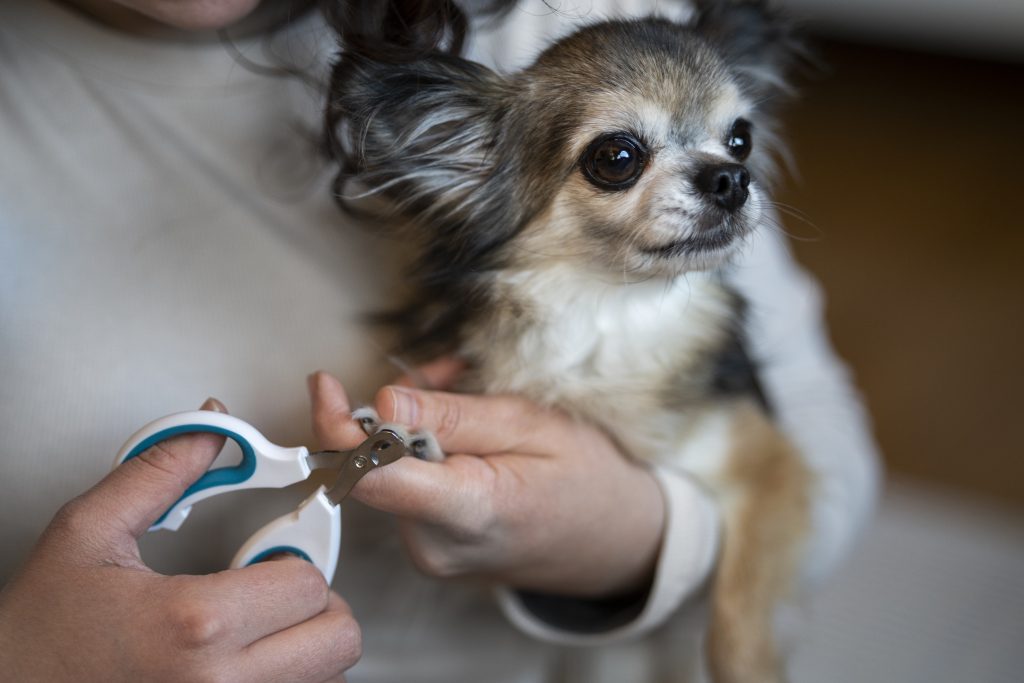Trimming your dog’s nails is an essential part of their grooming routine, but it can be daunting. With the right tools and technique, you can make the process safe and stress-free for both of you.

Tools & Setup
Scissor vs. Guillotine Clippers
The type of clipper you choose depends on your preference and your dog’s nail size.
- Scissor Clippers: These are often best for larger dogs with thick nails. They work like a pair of scissors with curved blades.
- Guillotine Clippers: These are great for smaller to medium-sized dogs. You insert the nail into a small hole, and a blade slides to cut the tip.
Styptic Powder & Good Lighting
Always have styptic powder on hand. This is a special powder that stops bleeding quickly if you accidentally cut too far. It’s also critical to work in a well-lit area so you can clearly see the nail.
Finding the Quick & Safe Angles
Light vs. Dark Nails
- Light-colored nails: The pink “quick” (the live part of the nail with blood vessels and nerves) is visible. You can see where it ends and trim the clear part in front of it.
- Dark-colored nails: The quick is not visible. Trim tiny slivers off the end of the nail until you see a small, dark circle in the center. This indicates you’re close to the quick.
Small, Frequent Trims
The key to avoiding the quick is to take off very small amounts at a time. It’s much better to trim too little than too much. This also helps the quick recede over time, making future trims easier.
Step-by-Step Nail Trim
Calm Handling & Positioning
Start with your dog in a comfortable position, either sitting or lying down. Gently hold their paw and press on the paw pad to extend the nail. Speak to them in a calm, reassuring voice.
Trim, Check, Reward
Take a small snip from the very tip of the nail. After each trim, check the cut surface. Look for the small, dark dot in the center, or for light-colored nails, the pink quick. Immediately reward your dog with a small, tasty treat after each nail you successfully trim to create a positive association.
Troubleshooting & Alternatives
If You Nick the Quick—What to Do
Don’t panic! Dip the bleeding nail directly into the styptic powder. Apply pressure and hold for a few seconds. The bleeding should stop almost immediately. It’s a common mistake, and your dog will be fine.
Nail Grinders & Professional Grooming
If clippers are too stressful for you or your dog, consider using a nail grinder. These tools file the nail down slowly and smoothly. For dogs with a strong aversion to nail trims, or for a more polished look, a professional groomer is always a great option.
Maintenance Schedule
How Often to Trim
The frequency of trims depends on your dog’s activity level and nail growth rate. A good general rule is to check them every 2-4 weeks. If you hear their nails clicking on the floor, it’s definitely time for a trim.
Signs Nails Are Too Long
Long nails can cause discomfort and lead to skeletal issues over time. Look for signs like nails that are twisted or curled, or a paw that seems to be splayed out.
Do you have any specific concerns about your dog’s nails, or would you like to explore other grooming topics?



